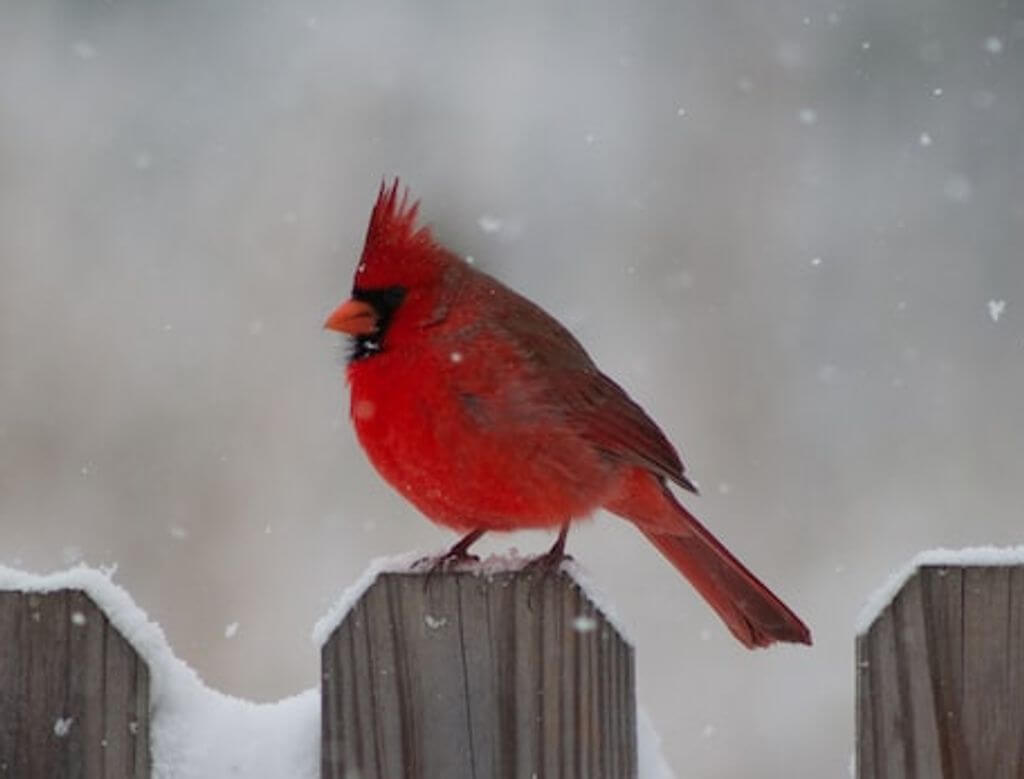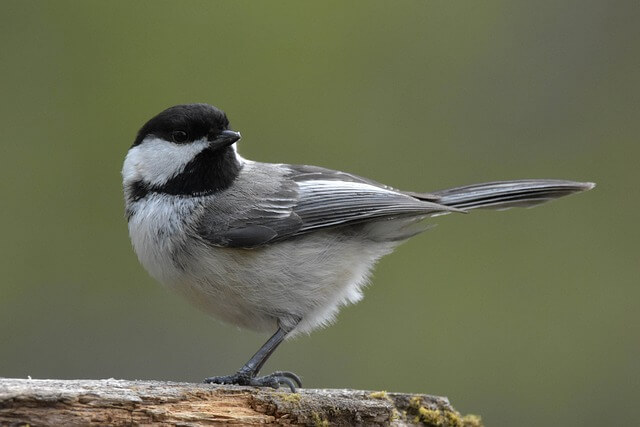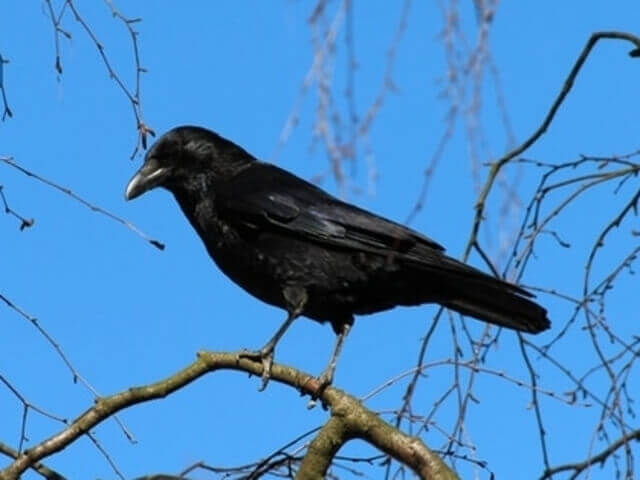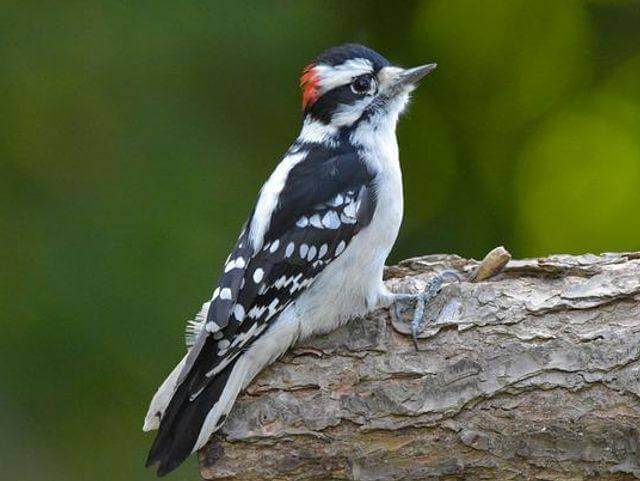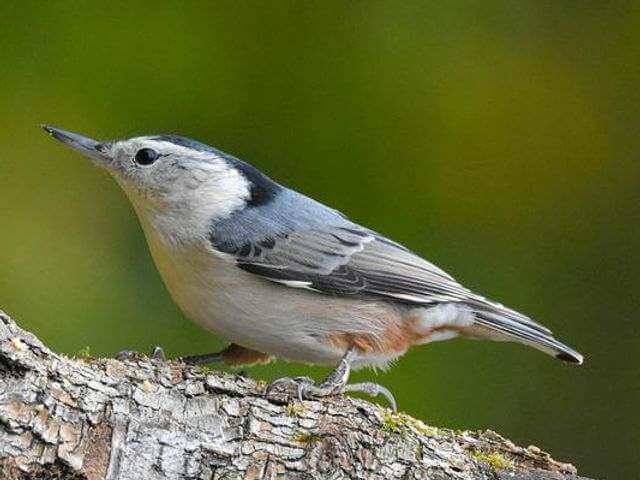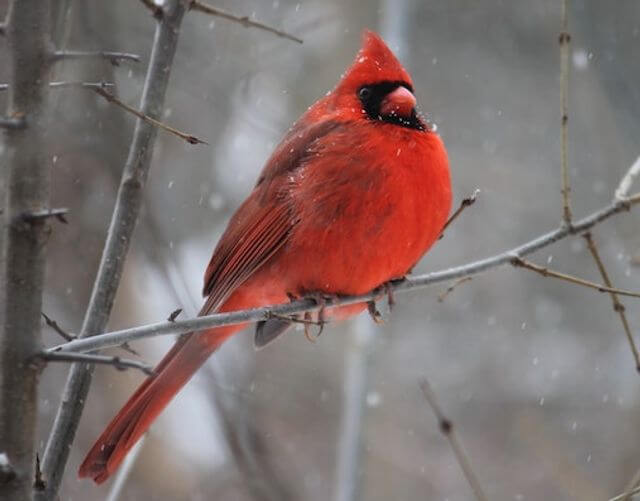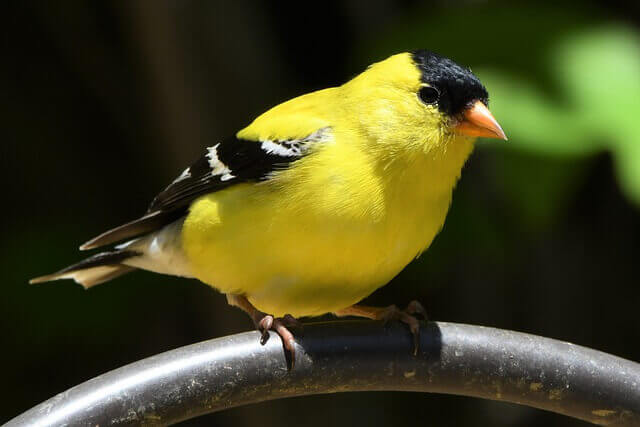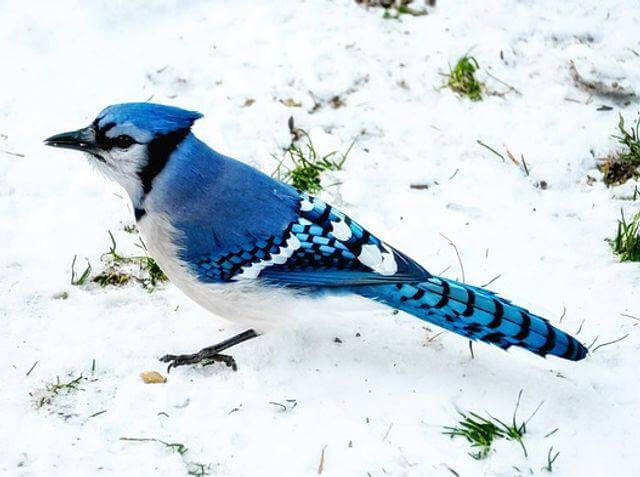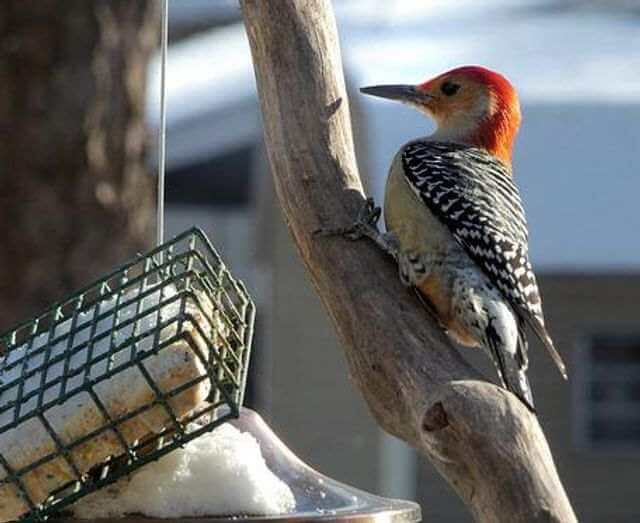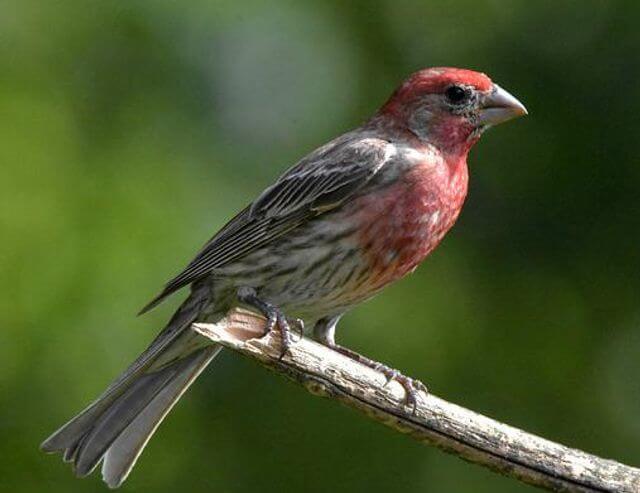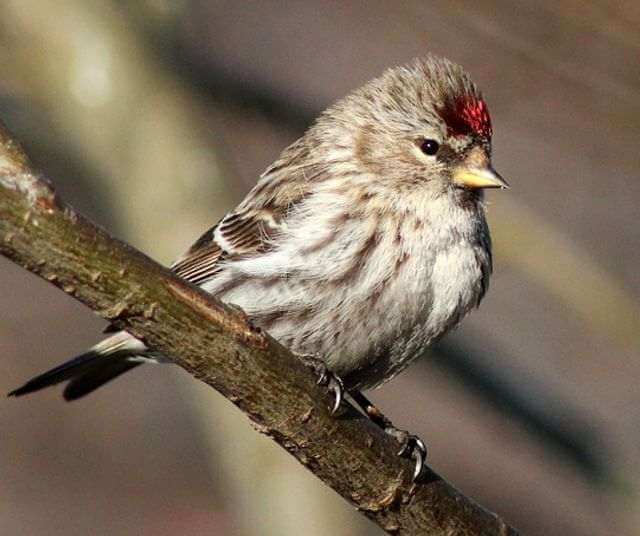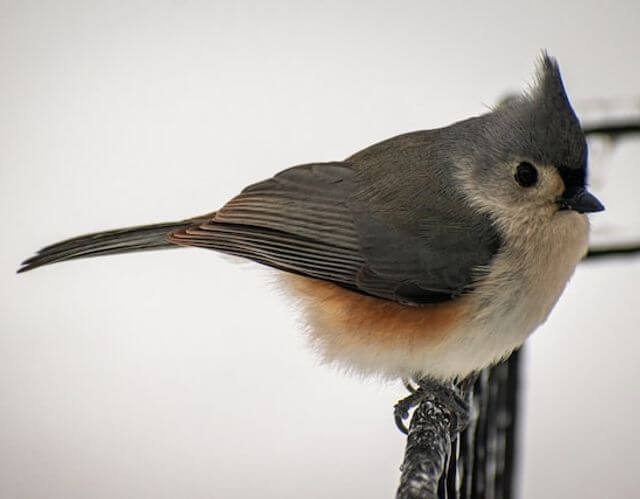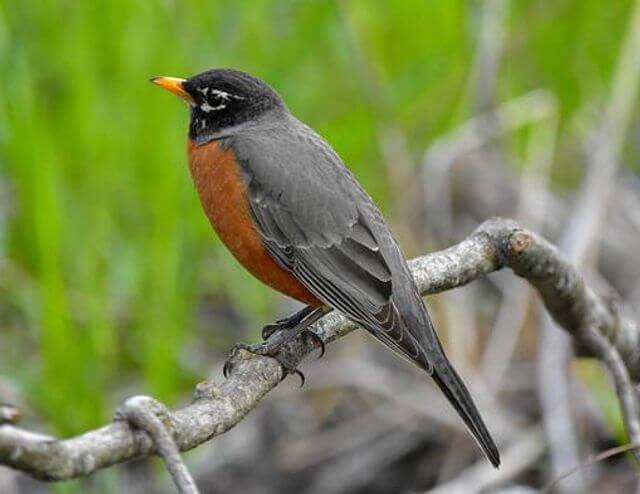Welcome to our expert guide on the 21 backyard winter birds in Wisconsin! Winter brings a unique array of bird species to Wisconsin’s backyards, offering birdwatchers and nature enthusiasts a delightful sight. In this comprehensive guide, we’ll explore 21 bird species commonly found in Wisconsin during the winter months.
From vibrant cardinals to agile chickadees, learn about the fascinating behaviors, habitats, and feeding preferences of these winter visitors. Whether you’re an experienced birder or new to birdwatching, this guide is your go-to resource for identifying and appreciating the avian diversity in Wisconsin’s winter landscape.
Click the Play button below to listen to our podcast:
Table of Contents
- 1 Backyard Winter Birds in Wisconsin
- 1.1 Black-capped Chickadee
- 1.2 American Crow
- 1.3 Dark-eyed Junco
- 1.4 Downy Woodpecker
- 1.5 White-breasted Nuthatch
- 1.6 Northern Cardinal
- 1.7 American Goldfinch
- 1.8 Mourning Dove
- 1.9 Blue Jay
- 1.10 Red-bellied Woodpecker
- 1.11 House Sparrow
- 1.12 Hairy Woodpecker
- 1.13 House Finch
- 1.14 European Starling
- 1.15 American Tree Sparrow
- 1.16 Red-breasted Nuthatch
- 1.17 Pine Siskin
- 1.18 Common Redpoll
- 1.19 Tufted Titmouse
- 1.20 American Robin
- 1.21 Pileated Woodpecker
- 2 Frequently Asked Questions
- 3 Author
Backyard Winter Birds in Wisconsin
Black-capped Chickadee
- Length: 4.7-5.9 in (12-15 cm)
- Weight: 0.3-0.5 oz (9-14 g)
- Wingspan: 6.3-8.3 in (16-21 cm)
- Scientific Name: Poecile atricapillus
- Frequency of Occurrence: 55.26%(Statistic by: eBird)
- Where To Find Them: The Black-capped Chickadee is a bird that can be found all over Wisconsin, but some of the best locations to see them are in the forests near Green Bay and Madison.
- How to Attract Them: Include a variety of fresh foods in your bird feeder. Black-capped Chickadees love seeds, but they also enjoy fruits, nuts and other small snacks. Make sure to keep your feeder stocked with all of the different types of food that these birds enjoy. Choose a location for your feeder that is well-lighted and has plenty of bird perches. This will help attract these busy birds. Keep your feeder clean and free of old food or materials that might attract predators or pests.
General Information: The black-capped chickadee is a small bird that can be found throughout the eastern and central United States. The distribution range of this bird includes all of New England, most of the mid-Atlantic, much of the Southeast, as well as portions of the Midwest and West.
This bird is primarily found in wooded areas, but will also inhabit open fields. The black-capped chickadee feeds on things like bugs, seeds and berries. It nests in tree cavities, but has been known to use other structures, such as abandoned burrows or old birdhouses.
Related Post:
- Unique Black-Capped Chickadee Facts You Need To Know!
- Best Bird Feeder For Chickadees (The Ultimate Guide 2022)
- How Do I Attract Chickadees To My Yard (Expert Tips)
American Crow
- Length: 15.8-20.9 in (40-53 cm)
- Weight: 11.2-21.9 oz (316-620 g)
- Wingspan: 33.5-39.4 in (85-100 cm)
- Scientific Name: Corvus brachyrhynchos
- Frequency of Occurrence: 43.78%
- Where To Find Them: Some locations in Wisconsin where you can see them are the Milwaukee County Zoo, the Racine County Zoo, and the Dodge National Wildlife Refuge.
- How to Attract Them: Place a food source close to your home. Make sure the food is easy to access, and make sure it is fresh. One popular option is a feeder filled with birdseed. Plant attractive plants near your home that American crows will find attractive. This could include flowering shrubs and trees, or brightly colored flowers. Make sure you have plenty of open spaces around your home so that American crows can fly freely. Avoid making your home too small or enclosed, as this will prevent the birds from accessing it easily.
General Information: The American Crow is the most common bird in North America. The crow can be found in all the 50 states of the United States, as well as in Canada and Mexico. The crow’s distribution range is from the Arctic tundra to the tropics. The crow prefers open landscapes, such as fields, meadows, and deserts. It also likes to live near water sources, such as rivers and lakes.
The crow’s diet consists mostly of insects, spiders, earthworms, frogs, small snakes, carrion, garbage, birds eggs, seeds, grain, fruit and berries. However, it will also eat fruits and vegetables. The crow usually nests in tall trees or on high platforms. It has a monogamous mating system where the male mates with one female for life.
Related Post:
Dark-eyed Junco
- Length: 5.5-6.3 in (14-16 cm)
- Weight: 0.6-1.1 oz (18-30 g)
- Wingspan: 7.1-9.8 in (18-25 cm)
- Scientific Name: Junco hyemalis
- Frequency of Occurrence: 42.28%
- Where To Find Them: You can see Dark-eyed Junco’s in locations such as the Kettle Moraine State Forest, La Crosse County Forest, Apostle Island National Lakeshore, and Northwoods State Forest.
- How to Attract Them: Look for open areas with plenty of trees and shrubs for this bird to perch on. Feed them fresh fruit and nuts, as well as seeds and insects. They will respond well to food that is easy to access. Try making a nest for them in a tree or shrub, or build them a perch box. They will appreciate your attention!
General Information: The Dark-eyed Junco is a common bird found throughout North America. It has a distribution range that extends from southern Canada to the northern parts of Mexico. The Dark-eyed Junco is a migratory bird and spends the winter in warm countries such as Central America and South America.
The Dark-eyed Junco feeds on insects, but will also eat small seeds. During the breeding season, the Dark-eyed Junco builds a simple stick nest in a tree using twigs, leaves, feathers and moss. The eggs are pale blue or white, and typically three to six eggs are laid per clutch. The incubation period is about 13 days.
Related Post:
Downy Woodpecker
- Length: 5.5-6.7 in (14-17 cm)
- Weight: 0.7-1.0 oz (21-28 g)
- Wingspan: 9.8-11.8 in (25-30 cm)
- Scientific Name: Picoides pubescens
- Frequency of Occurrence: 41.31%
- Where To Find Them: The Downy Woodpecker is a common bird to see in Wisconsin. They can be found at many locations, including the Apostle Islands National Lakeshore and the Wisconsin Dells.
- How to Attract Them: You can try hanging bird feeders from high up in trees, or placing water sources near your home in potential nesting areas.
General Information: The Downy Woodpecker is a common bird in North America. The distribution range of this bird extends from the southern United States all the way to northern Mexico. In addition to its wide distribution, Downy Woodpeckers are found in a variety of habitats, including open woodland, oak-hickory forests, and even urban areas.
They prefer to feed on insects and other small prey, but will also consume fruit. Nests are typically built in trees near water sources, but they have been known to nest in buildings and other unusual locations.
Related Post: How to Attract Downy Woodpeckers to Your Yard? (Easy!)
White-breasted Nuthatch
- Length: 5.1-5.5 in (13-14 cm)
- Weight: 0.6-1.1 oz (18-30 g)
- Wingspan: 7.9-10.6 in (20-27 cm)
- Scientific Name: Sitta carolinensis
- Frequency of Occurrence: 38.36%
- Where To Find Them: Northern Wisconsin: The White-breasted Nuthatch is found in the boreal forests of Northern Wisconsin and scattered areas of Superior and Mackinac counties. Southern Wisconsin: The White-breasted Nuthatch is found in the oak-hickory forests of Southern Wisconsin, but not in Milwaukee or its surrounding suburbs.
- How to Attract Them: Try creating interesting perches for the birds. Place a sturdy tree branch near a window or doorframe, and top it with a small piece of wood or wire so the nuthatch has something to cling onto while it’s exploring. Plant plenty of acorns and oak trees around your property – these are favorite food sources for this bird. Hang pieces of fruit from nearby trees – this will also provide tasty snacks for the birds.
General Information: The White-breasted Nuthatch is a common bird in much of North America. The distribution range includes most of the eastern half of the continent, as well as portions of the northwestern and southwestern United States and southern Canada. It is also found in many areas in Central and South America.
This nuthatch prefers oak, hickory, birch, maple, and other hardwood trees for nesting; it also uses a variety of other tree cavities, including old woodpecker holes. The diet consists of mostly insects and various seeds.
Related Post: How to Attract Nuthatches to your Backyard? Expert Tips!
Northern Cardinal
- Length: 8.3-9.1 in (21-23 cm)
- Weight: 1.5-1.7 oz (42-48 g)
- Wingspan: 9.8-12.2 in (25-31 cm)
- Scientific Name: Cardinalis cardinalis
- Frequency of Occurrence: 38.33%
- Where To Find Them: Locations where you can see these beautiful birds include Manitowoc, Sheboygan, Fond du Lac, Green Bay, and Appleton.
- How to Attract Them: Attracting Northern cardinals is not difficult, but there are a few things you can do to make it easier. First, make sure your bird feeder has a good supply of seeds and fruit. Also, keep your yard clean and free of weeds–cardinals like to eat these plants. If you have a tree in your yard, be sure to leave some seedlings up so the cardinal can feast on natural food sources. Finally, give these birds some space–they like their privacy!
General Information: The Northern Cardinal is a brightly colored red bird that can be found throughout North America. This bird is most commonly found in the eastern United States, but can also be found in the west. The Northern Cardinal’s distribution range extends from southern Canada to central Mexico.
This bird inhabits a variety of habitats including urban areas, suburbs, and forests. The Northern Cardinal feeds mainly on insects, but will also eat fruits, berries, seeds and nuts. The Northern Cardinal nests in cavities inside trees or other tall structures.
Related Post:
- Where Are Cardinals Found? Best Spots to Look!
- Best Birdhouse for Cardinals 2022 (Tested And Rated)
- 10 Best Bird Feeders for Cardinals (Rated for 2022)
American Goldfinch
- Length: 4.3-5.1 in (11-13 cm)
- Weight: 0.4-0.7 oz (11-20 g)
- Wingspan: 7.5-8.7 in (19-22 cm)
- Scientific Name: Spinus tristis
- Frequency of Occurrence: 33.47%
- Where To Find Them: The American Goldfinch is a common bird in Wisconsin. They can be found in many locations, but some of the best places to see them are at the Milwaukee Botanic Gardens and at Waukesha County Park.
- How to Attract Them: There are a few things that you can do in order to attract the American Goldfinch to your yard. One of the easiest things that you can do is to provide them with some seed and bird feed. This will help them get used to your yard and hopefully make them want to stay longer. You can also try different types of bird houses in order to entice them.
General Information: The American Goldfinch is a medium-sized bird that ranges throughout much of North America. The goldfinch is most prevalent in the east, where its range extends into Ontario and Quebec, but it can also be found as far west as California. In the north, its range stretches into Minnesota and Michigan.
The American Goldfinch prefers to live in areas with plenty of trees and leafy green vegetation. It feeds on a variety of seeds, such as thistle, asters, and sunflowers. These birds typically nest in high in trees or shrubs.
Related Post: Interesting American Goldfinch Facts You Need to Know!
Mourning Dove
- Length: 9.1-13.4 in (23-34 cm)
- Weight: 3.4-6.0 oz (96-170 g)
- Wingspan: 17.7 in (45 cm)
- Scientific Name: Zenaida macroura
- Frequency of Occurrence: 31.73%
- Where To Find Them: They can be found in many locations in Wisconsin, but here are a few places where you can see them: Lake Butte des Morts State Park, Devil’s Lake State Park, Green Bay Botanical Garden, and the University of Wisconsin-Stevens Point Agricultural Experiment Station.
- How to Attract Them: One thing that people can do to attract more of these birds is to plant trees in their yard that are favored by the doves. These trees include oaks, maples, and willows. The best time to plant these trees is during the springtime, when the doves are mating season. Another way to attract mourning doves is to make sure there is food available for them, such as seeds. This can be done by keeping a garden or feeding station set up for the birds.
General Information: The Mourning Dove is a migratory bird that can be found in many parts of the world. The distribution range of this bird extends from North America to Europe and Asia. Mourning Doves are usually found in open areas such as meadows, fields, and woods. They are also known to live in urban areas.
Mourning Doves eat a variety of things including grains, seeds, herbs and some fruit. They mostly eat during the morning and late afternoon. They build their nests in trees or on large rocks. The average lifespan of a Mourning Dove is around 10 years.
Related Post: Facts About Mourning Doves – 10 Things You Need To Know!
Blue Jay
- Length: 9.8-11.8 in (25-30 cm)
- Weight: 2.5-3.5 oz (70-100 g)
- Wingspan: 13.4-16.9 in (34-43 cm)
- Scientific Name: Cyanocitta cristata
- Frequency of Occurrence: 30.36%
- Where To Find Them: The Blue Jay is a bird that can be found in many locations in Wisconsin. They are most commonly found near bodies of water, such as lakes and rivers. Some locations where you can see the Blue Jay are the Kettle Moraine State Forest, Eagle Point State Park, and Green Bay Municipal Airport.
- How to Attract Them: Feed them regularly – Blue Jays love food and will often come to your feeder if you give them enough of it. Try offering different kinds of food, especially seeds and small pieces of fruit. Keep your garden clean – If your garden is messy, the blue Jay may think it’s a dirty place to be and won’t visit as much. Clear away all the leaves and debris so that the bird has plenty of space to feed and nest.
General Information: The blue Jay is a common bird in North America. The distribution range of the blue Jay extends throughout most of the eastern half of the continent, as well as parts of southern Canada. The Blue Jay is also found in Central America and Mexico. The Jays are typically found in open areas such as farmland, parks, and gardens.
They also inhabit suburban, woodland and forest areas. Jays eat a variety of foods including insects, small animals, seeds, grains, berries and some fruit. During the breeding season, Jays build their nests in trees or on high structures such as power lines or telephone poles.
Related Post:
- What Attracts Blue Jays to your Yard?(Expert Tips)
- 15 Best Bird Feeders For Blue Jays (Tried & Tested 2022)
- What Does A Blue Jay Eat? (10 Favorite Foods Revealed!)
- Do Blue Jays Migrate? The Truth
Red-bellied Woodpecker
- Length: 9.4 in (24 cm)
- Weight: 2.0-3.2 oz (56-91 g)
- Wingspan: 13.0-16.5 in (33-42 cm)
- Scientific Name: Melanerpes carolinus
- Frequency of Occurrence: 28.60%
- Where To Find Them: The red-bellied woodpecker can be seen in many different locations around the state, but some of the best places to see them are in the counties of Dodge, Polk, and Winnebago.
- How to Attract Them: One way to attract them is to plant some acorns in your yard. Another way to attract them is to make sure that you have some dead trees around your property that they can access. You can also try putting out some bird feeders, or making a nest for them in a tree.
General Information: The Red-bellied Woodpecker is a medium-sized woodpecker found in the eastern and central United States. It ranges from southern Maine south to northern Florida and west to eastern Texas.This woodpecker prefers wooded areas with plenty of trees, but can also be found in open habitats such as gardens and parks.
The diet of this bird consists mostly of insects, but they will also consume tree nuts, small mammals, eggs of small birds, and fruits. This species nests in excavated tree cavities, typically laying two to six eggs per clutch.
Related Post: How to Attract Red-bellied Woodpeckers to your Yard?
House Sparrow
- Length: 5.9-6.7 in (15-17 cm)
- Weight: 0.9-1.1 oz (27-30 g)
- Wingspan: 7.5-9.8 in (19-25 cm)
- Scientific Name: Passer domesticus
- Frequency of Occurrence: 27.42%
- Where To Find Them: Some of the best places to see house sparrows are in Madison, Milwaukee, and Green Bay. In Madison, they can be found around the State Capitol and at many parks and gardens. Milwaukee has a large population of house sparrows, and they can be found throughout the city. In Green Bay, you will find them around the Fox Theatre and on the University of Wisconsin-Green Bay campus.
- How to Attract Them: First, make sure that you have adequate food available for the birds. This can be in the form of seeds or pellets, which will help keep them healthy and happy. Second, make sure that there is plenty of water present for the birds. This will help them stay hydrated, and will also help keep them clean. Finally, provide some suitable perches for the birds to rest on. House sparrows like to perched on high areas so providing these will encourage them to visit your property more often.
General Information: The house sparrow is a common bird found across North America. It can be found in both urban and rural areas, and its distribution range extends from the eastern seaboard to central California. The house sparrow is a seed-eater, but it also eats insects, berries, and other small animals.
In winter, it will often forage on the ground for food. The house sparrow nests in the ground or in a tree cavity. It has two to five eggs, which are incubated by the female alone for 14 days. The hatchlings are fed by both parents for about 10 days after they hatch.
Related Post: How to Attract Sparrows to your Backyard? (Like A Pro)
Hairy Woodpecker
- Length: 7.1-10.2 in (18-26 cm)
- Weight: 1.4-3.4 oz (40-95 g)
- Wingspan: 13.0-16.1 in (33-41 cm)
- Scientific Name: Leuconotopicus villosus
- Frequency of Occurrence: 24.48%
- Where To Find Them: The Hairy Woodpecker is a common bird in Wisconsin. They can be found in a variety of locations including the Mississippi River Valley, the Kettle Moraine State Forest, and parts of the Driftless Area.
- How to Attract Them: First, create an environment that is both interesting and comfortable for them. Make sure your space has plenty of trees, branches and nesting areas for them to explore. You might also want to provide them with food sources like mealworms, cracked corn, sunflower, fruits, and nectar.
General Information: The Hairy Woodpecker is a small, stocky woodpecker that can be found in most of North America. It ranges from the Yukon Territory south to central Mexico, and east to eastern Kentucky and Tennessee. The Hairy Woodpecker’s habitat includes woodlands, but it also frequents gardens and orchards.
The bird feeds on insects, such as beetle larvae, ants, caterpillars, especially termites, which are its main source of food. They prefer to build their nests in excavated tree cavities. The Hairy Woodpecker is generally not considered a threatened species, although it does sometimes become endangered due to loss of its natural habitat.
House Finch
- Length: 5.1-5.5 in (13-14 cm)
- Weight: 0.6-0.9 oz (16-27 g)
- Wingspan: 7.9-9.8 in (20-25 cm)
- Scientific Name: Haemorhous mexicanus
- Frequency of Occurrence: 23.08%
- Where To Find Them: The House Finch is a common sight in many places throughout Wisconsin, especially in cities like Milwaukee and Madison. It is also common to see them near farmers markets and other areas where there are lots of insect-feeding birds.
- How to Attract Them: To attract house finches to your home or yard, provide plenty of food such as sunflower, nyjer, or thistle seeds, and water sources as well as nest boxes and perches for them to sit on.
General Information: House Finches are a common bird in North America. They can be found throughout the United States and parts of Canada. The distribution range for this bird covers a large area, from the high altitudes of the Rocky Mountains to the coastal areas of California and Florida. House Finches inhabit a variety of habitats, including forested areas, agricultural land, and urban areas. They are very adaptable birds and can live in a wide variety of climates.
House Finches have a wide range of food sources. They eat small insects, seeds, and worms. Nesting habits for this bird vary depending on location, but generally include building a small platform of sticks and twigs in a tree or on top of a building.
Related Post: How to Attract House Finch to your Yard? (Easy & Fast)
European Starling
- Length: 7.9-9.1 in (20-23 cm)
- Weight: 2.1-3.4 oz (60-96 g)
- Wingspan: 12.2-15.8 in (31-40 cm)
- Scientific Name: Sturnus vulgaris
- Frequency of Occurrence: 16.50%
- Where To Find Them: European starlings are commonly seen in gardens and parks throughout Wisconsin. They can be found in locations such as Madison, Appleton, Green Bay, Oshkosh and Milwaukee.
- How to Attract Them: European Starlings love to eat from hanging feeders with safflower seed, and they will come to visit often if you provide them with food regularly. Try different types of birdhouses. European Starlings prefer houses that are open on one side, so try making one out of wood and paint it bright yellow, green, or blue. You might also want to put some fruit inside the house for the birds to eat.
General Information: The European Starling otherwise known as the Common Starling is a common bird in Europe and North America. The distribution range of the European Starling includes most of the Old World except for Antarctica. It favors open areas such as farmland, meadows, marshes, gardens, airports, railroads and city parks.
The European Starling consumes a variety of food items including insects, fruit and other small animals. In fact it is one of the most successful predators in agricultural areas because it competes for food with other animals such as crows, pigeons and rats. The European Starling nests in holes in trees or buildings.
Related Post: How To Attract European Starlings To Your Yard Fast?
American Tree Sparrow
- Length: 5.5 in (14 cm)
- Weight: 0.5-1.0 oz (13-28 g)
- Wingspan: 9.4 in (24 cm)
- Scientific Name: Spizelloides arborea
- Frequency of Occurrence: 16.17%
- Where To Find Them: In Wisconsin, the American Tree Sparrow can be seen in locations such as Milwaukee, Madison, Green Bay, and Appleton.
- How to Attract Them: First, make sure that your yard is well-maintained. Include fresh flowers, shrubs and trees, and clean up any debris regularly. Sparrows like yards that are full of life and have interesting features to investigate. Second, try adding some food sources to your garden or backyard feeders. Seeds or bird feeders filled with seed products such as suet or cracked corn will attract American Tree Sparrows. Make sure the food is accessible from a distance so the birds don’t have to go too close to get it.
General Information: The American Tree Sparrow is a common bird in the United States. It is found in most states, but not in Hawaii or Puerto Rico. Its distribution range extends from southern Canada to the Gulf of Mexico and Central America.
The American Tree Sparrow prefers open habitats with plenty of vegetation, such as forests, parks, and gardens. They feed on a variety of foods, including seeds, weeds, insects, and berries. The American Tree Sparrow nests on the ground in colonies of up to 15 pairs.
Related Post: 10 Fascinating American Tree Sparrow Facts
Red-breasted Nuthatch
- Length: 4.3 in (11 cm)
- Weight: 0.3-0.5 oz (8-13 g)
- Wingspan: 7.1-7.9 in (18-20 cm)
- Scientific Name: Sitta canadensis
- Frequency of Occurrence: 13.57%
- Where To Find Them: The Red-breasted Nuthatch is a bird that can be found in many parts of Wisconsin. Some areas that the nuthatch can be found are in Green Bay, Oshkosh, La Crosse, Racine, Kenosha and Milwaukee.
- How to Attract Them: To attract this bird to your backyard, provide plenty of trees and shrubs for them to perch in, feed them fresh food such as black oil sunflower seeds and peanuts, and create a well-maintained habitat.
General Information: The red-breasted nuthatch is a common bird found in the eastern United States and Canada. This bird has a distribution range that includes most of New England, the Mid-Atlantic states, southern Ontario, and southwestern Michigan. The red-breasted nuthatch occupies a variety of habitats, including deciduous and coniferous forests, montane slopes, suburban gardens, andchaparral.
The red-breasted nuthatch is an insectivore that feeds on insects and spiders. It nests in cavities in trees or buildings. The red-breasted nuthatch populations have been increasing in some areas due to the conversion of forests to other types of land use.
Related Post: How to Attract Nuthatches to your Backyard? Expert Tips!
Pine Siskin
- Length: 4.3-5.5 in (11-14 cm)
- Weight: 0.4-0.6 oz (12-18 g)
- Wingspan: 7.1-8.7 in (18-22 cm)
- Scientific Name: Spinus pinus
- Frequency of Occurrence: 9.07%
- Where To Find Them: There are many locations in Wisconsin where you can see these birds.
Some popular spots include: Muskego County – Here you can find them at Muskego Lake Provincial Park and around Muskego. Oconto County – This county is home to many wooded areas, including Ashland Bay State Forest and Oconto Falls State Park. Waukesha County – This county has a large population of pine siskins, which can be seen at Blue Mound State Park, Eagle Heights Golf Course, and River Hills Golf Course.
- How to Attract Them: Plant plenty of fruit trees and shrubs in your yard. These birds are attracted to brightly colored fruits and flowers. Provide them with plenty of feeders with millet or hulled sunflower seeds and water sources. Keep their food and water clean, so they don’t get sick. Try using bird houses or other attractants in your yard. These little homes provide shelter, food, and water for the birds. Make sure you keep all outdoor debris cleared away, so they have enough room to perch and fly free.
General Information: The Pine Siskin is a small, sparrow-like bird that can be found throughout much of the eastern and central United States. It is also found in parts of Canada and Mexico. The Pine Siskin’s distribution range includes much of the eastern United States, from Maine to Florida, as well as parts of southern Ontario and Quebec. The Pine Siskin prefers open country with scattered trees and shrubs, but can also be found in urban areas.
The Pine Siskin feeds mainly on insects, but will also eat seeds, berries, and other fruits. It nests in small colonies close to water sources. The pair builds a cup-shaped nest of grasses on a tree branch or 10 to 40 feet off the ground. They are monogamous and breed year-round in most parts of their range. The chicks are fed by their parents for about two weeks after they hatch.
Common Redpoll
- Length: 4.7-5.5 in (12-14 cm)
- Weight: 0.4-0.7 oz (11-20 g)
- Wingspan: 7.5-8.7 in (19-22 cm)
- Scientific Name: Acanthis flammea
- Frequency of Occurrence: 8.73%
- Where To Find Them: The two most common places to see redpolls in Wisconsin are at Monticello Dam and at the Kohler Estate on Lake Winnebago. You can also find them in various parks throughout the state, including Green Bay’s Sherman Park, Manitowoc’s Cascade Park, and Appleton’s Riverside Park.
- How to Attract Them: First, make sure that your yard is well-maintained and attractive. Include plenty of flowering plants and trees, as well as a nice pond or other water feature. Second, keep an eye out for food sources. Common Redpolls are attracted to niger and thistle, they like black oil sunflower seeds. If you can provide these items, they will likely come to visit.
General Information: The Common Redpoll is a widespread bird found in North America. It has a distribution that includes the eastern half of Canada, the United States, most of Central America, all of South America except for the extreme south (where it ranges from Uruguay to Tierra del Fuego), and parts of Mexico.
The Common Redpoll is an omnivore. It feeds on mostly seeds, from birch trees, weeds, and grasses, but they will also feed on insects in the summer. It nests in colonies, often in holes in trees or other structures.
Tufted Titmouse
- Length: 5.5-6.3 in (14-16 cm)
- Weight: 0.6-0.9 oz (18-26 g)
- Wingspan: 7.9-10.2 in (20-26 cm)
- Scientific Name: Baeolophus bicolor
- Frequency of Occurrence: 8.57%
- Where To Find Them: The tufted titmouse is a common bird in Wisconsin. They can be seen in many locations, but some of the best spots are at the Milwaukee Botanic Gardens and the Henry Vilas Zoo.
- How to Attract Them: They are easy to attract with some simple feeding habits. The birds like to eat seeds, nuts, and insects. Try putting out a mix of these items in a feeder and watch the tufted titmice flock to it!
General Information: The Tufted Titmouse is a small passerine bird that is found in the eastern and central United States. The distribution range of the Tufted Titmouse includes most of Ohio, parts of Indiana, western Kentucky, Tennessee, eastern Arkansas, and western Missouri. The Tufted Titmouse inhabits mixed forest and shrubland with some trees.
They spend their time foraging on the soil for insects and various seeds. They build their nests in tree cavities or on poles. They lay two to four eggs which are incubated by the female alone for about 12 days.
Related Post: How to Attract Tufted Titmouse to my Yard? (Explained)
American Robin
- Length: 7.9-11.0 in (20-28 cm)
- Weight: 2.7-3.0 oz (77-85 g)
- Wingspan: 12.2-15.8 in (31-40 cm)
- Scientific Name: Turdus migratorius
- Frequency of Occurrence: 6.71%
- Where To Find Them: Some locations where you can see them include Wisconsin Dells, Green Bay, Marinette, Eagle River, and Sturgeon Bay.
- How to Attract Them: First and foremost, make sure you have a good place for them to live. American robins prefer open spaces with plenty of food and water sources, such as a birdbath. Make sure you have a bird feeder with some mealworms. Also, feel free to plant bushes and trees that provide nest sites and food sources for these birds!
General Information: The American Robin is a common bird across much of North America. The distribution range extends from southern Canada and the USA to central Mexico and south to the northern parts of Veracruz, Puebla, and Oaxaca. This widespread species prefers open areas with plenty of trees and bushes for nesting.
The diet consists mostly of insects, but they will also eat small animals such as earthworms or fruit. Nests are constructed in hollow trees or other clutter-free spots and are lined with grass, feathers, or soft plant material.
Related Post:
- How To Attract Robins To Your Yard – 7 Best Tips!
- 9 Birds That Look Like Robins But Aren’t (Photos, & Info)
- 5 Best Bird Feeders For Robins (Tested & Rated For 2022)
Pileated Woodpecker
- Length: 15.8-19.3 in (40-49 cm)
- Weight: 8.8-12.3 oz (250-350 g)
- Wingspan: 26.0-29.5 in (66-75 cm)
- Scientific Name: Dryocopus pileatus
- Frequency of Occurrence: 5.95%
- Where To Find Them: They are usually seen in areas with lots of trees, such as the forests near Green Bay and Appleton.
- How to Attract Them: There are several ways to attract these birds to your yard. One option is to make a feeder that offers a variety of food items, such as peanuts, or black-oil sunflower seeds. You can also try hanging fruit such as oranges, apples and grapes or install birdhouses near your property. Finally, you can plant trees and shrubs that provide these birds with food and nesting sites.
General Information: The pileated woodpecker is a large, powerful bird that can be found in most parts of the United States. It is the largest member of the Picidae family and has a long, slender bill. The pileated woodpecker ranges from southern Canada to Florida and west to Texas. Its natural habitats are temperate forests, mixed forests, and woodland, but it can also be found in urban areas.
The pileated woodpecker mainly eats ants, insects, but it will also eat small fruits, nuts and seeds if it finds them. Pileated woodpeckers typically nest in tree cavities, but they have been known to use artificial structures such as churches and bird houses.
Related Post: How to Attract Pileated Woodpeckers to your Yard (Fast)
Frequently Asked Questions
Do Blue Jays stay in Wisconsin in winter?
Blue jays are common residents in Wisconsin in winter. They are often seen in yards, under bridges and near other large trees. Blue jays usually migrate south for the winter but will stay in Wisconsin if the weather is mild.
Do finches stay in Wisconsin for the winter?
Wisconsin is generally a great place to live for house finches. However, during the winter, some will leave to warmer climates. This might be due to colder temperatures or lack of food. Overall, house finches will typically stay in Wisconsin during the winter, but there are exceptions.
Do cardinals stay in Wisconsin in winter?
Wisconsin is a state that is well-known for its cold winters. However, one of the animals that commonly resides in this state during the winter season is the cardinal. Cardinals are adapted to cold weather and typically stay in Wisconsin during the winter. Cardinals are usually found in open areas such as parks and nature preserves where they can fly freely.
How do you attract winter birds in Wisconsin?
In Wisconsin, winter is a great time to attract birds with suet. Black-oil sunflower seeds are also a good bird feeder option, as they are high in energy and low in fat. Birdbaths can be installed near trees or other open areas where birds can perch, and birdhouses can provide shelter for birds during colder months.
Related Post: Most Common Backyard Birds In Wisconsin (Explained)

